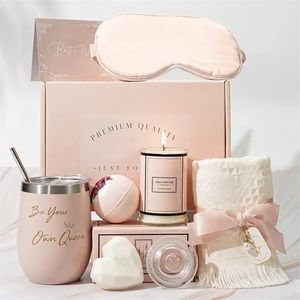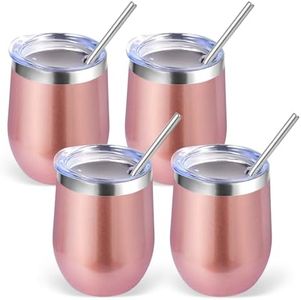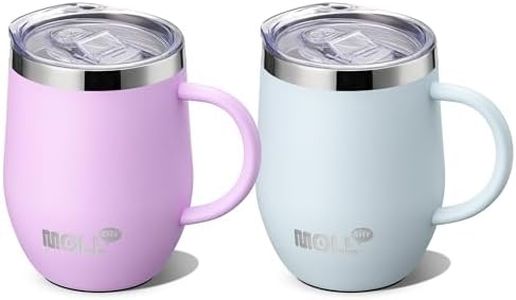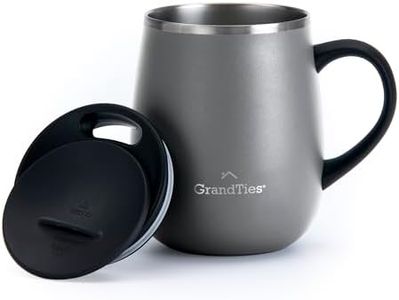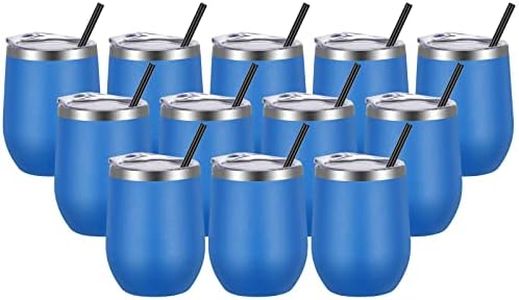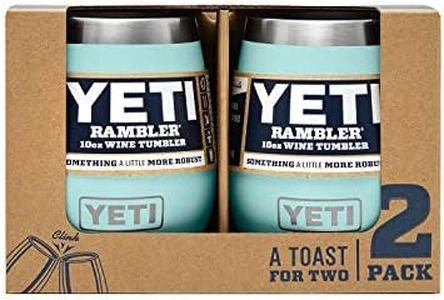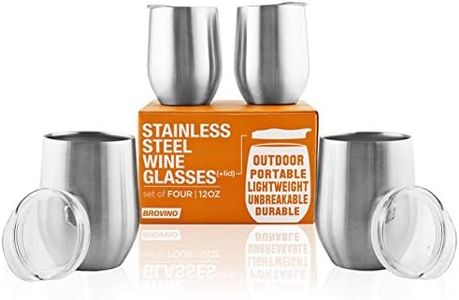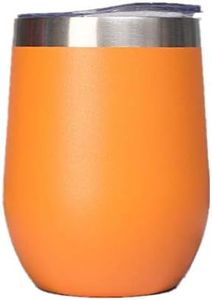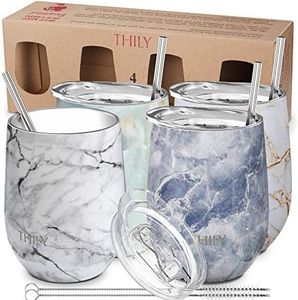We Use CookiesWe use cookies to enhance the security, performance,
functionality and for analytical and promotional activities. By continuing to browse this site you
are agreeing to our privacy policy
10 Best Wine Tumblers
From leading brands and best sellers available on the web.Buying Guide for the Best Wine Tumblers
Choosing the right wine tumbler makes a difference in how you enjoy your wine, whether you're sipping at home, outdoors, or at a gathering. Wine tumblers come in various shapes, sizes, and materials, each with their own advantages. To pick one that suits your needs, focus on how you plan to use it—are you looking for something portable for travel or picnics, or do you want an elegant option for dinner parties? By understanding the important features and how they match your lifestyle and drinking habits, you will be able to select a wine tumbler that enhances your overall experience.MaterialWine tumblers are commonly made from materials like glass, stainless steel, or plastic. The material affects durability, taste, and insulation. Glass offers a classic look and doesn't alter the flavor of wine but is delicate and best for indoor use. Stainless steel is sturdy, often insulated, and good at maintaining wine's temperature, making it popular for outdoor events but it can slightly change the wine’s taste compared to glass. Plastic is lightweight and resistant to breaking, making it ideal for kids or travel, but it may scratch or stain over time. When choosing, think about where and how often you’ll use your tumbler: for regular home use, glass may be best; for picnics, camping, or poolside, stainless steel or plastic is likely preferable.
InsulationInsulation refers to how well the tumbler keeps your wine at your desired temperature. Non-insulated tumblers won’t keep wine cold or warm for long, while double-walled or vacuum-insulated tumblers can maintain temperature for hours. Insulation levels typically range from single-walled (minimal insulation) to double-walled vacuum-sealed (excellent insulation). If you like to keep your wine chilled while outside or on warm days, go for better insulation. If you're mainly drinking indoors and don't mind refreshing your wine or using a cooler, a simpler, non-insulated tumbler may be fine.
CapacityCapacity is the volume of liquid the tumbler holds and it’s typically measured in ounces or milliliters. Smaller tumblers (up to 10 oz) are suitable for tasting and sipping, while standard tumblers (10-16 oz) work well for typical wine pours. Larger sizes (over 16 oz) are available if you prefer fewer refills or like to add ice. Think about how much wine you usually pour and whether you want flexibility for drinks beyond wine; for standard wine enjoyment, a mid-sized tumbler is usually sufficient.
Lid TypeThe lid can make a big difference in usability. Some tumblers come with a secure, spill-resistant lid, often featuring a small opening for sipping or even a closing mechanism. Others might have a simple cover or no lid at all. Lids help maintain temperature and prevent spills, especially useful for outdoor use or if you have kids around. If portability and mess-prevention matter to you, look for a tumbler with a high-quality, leak-resistant lid. If you’re using the tumbler mainly at a table, a lid may be less important.
Shape and DesignWine tumblers come in a range of shapes, from stemless versions that resemble traditional wine glasses to narrower, cup-like forms. While the shape can influence the aroma and taste slightly, in practical terms it's more about comfort and personal style. Some are easy to grip and less likely to tip, while others might be more refined or elegant. Consider how the tumbler feels in your hand and whether the design fits your aesthetic preferences and the primary setting in which you'll use it.
Ease of CleaningWine tumblers can be either hand-wash only or dishwasher safe. Tumblers with intricate designs or parts, especially those with lids or insulation, may require hand washing to maintain their quality. If convenience is important or if you use your tumbler frequently, selecting one that can be cleaned in the dishwasher may save time and effort, while hand-wash-only options can offer more delicate or specialized designs.

